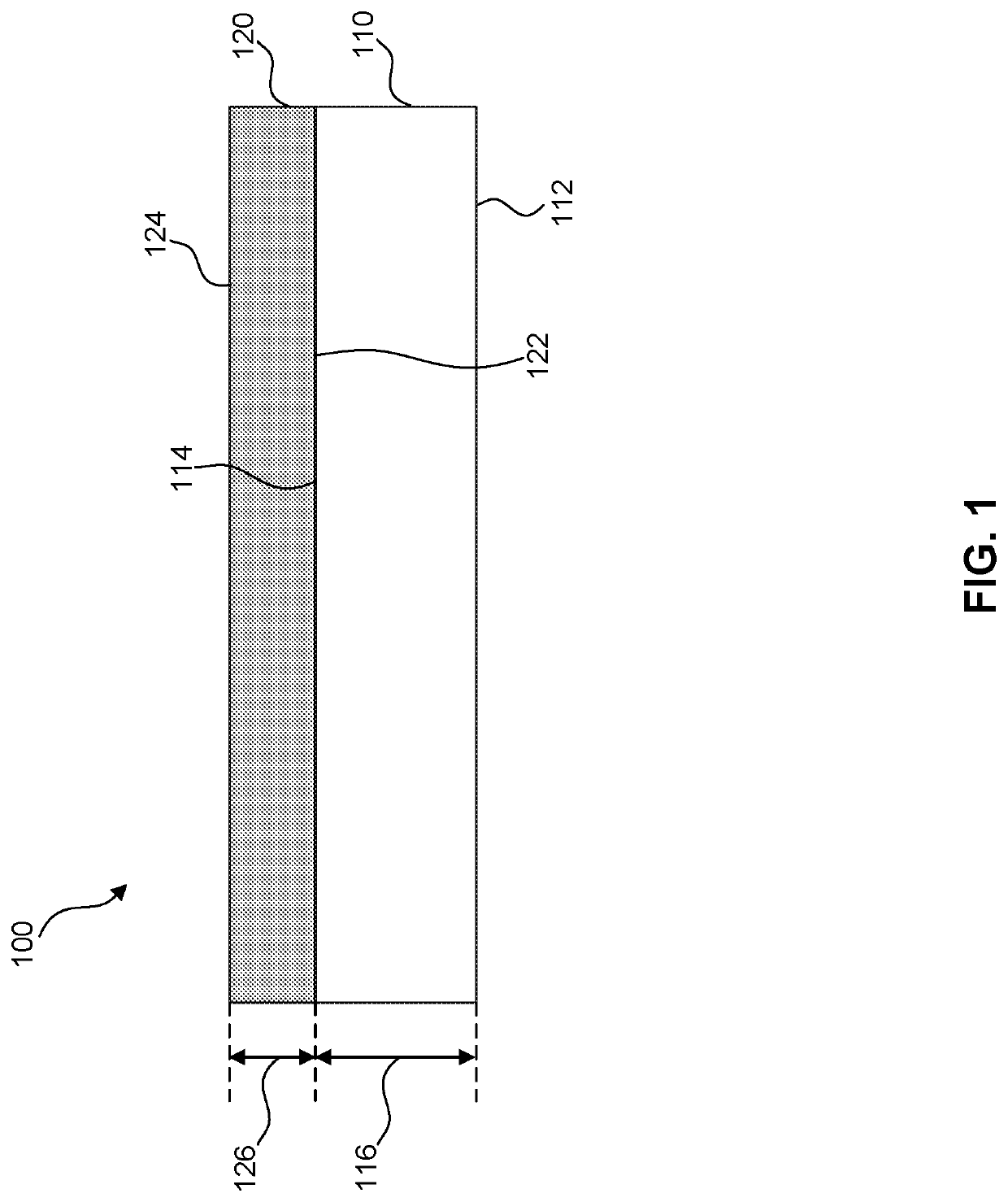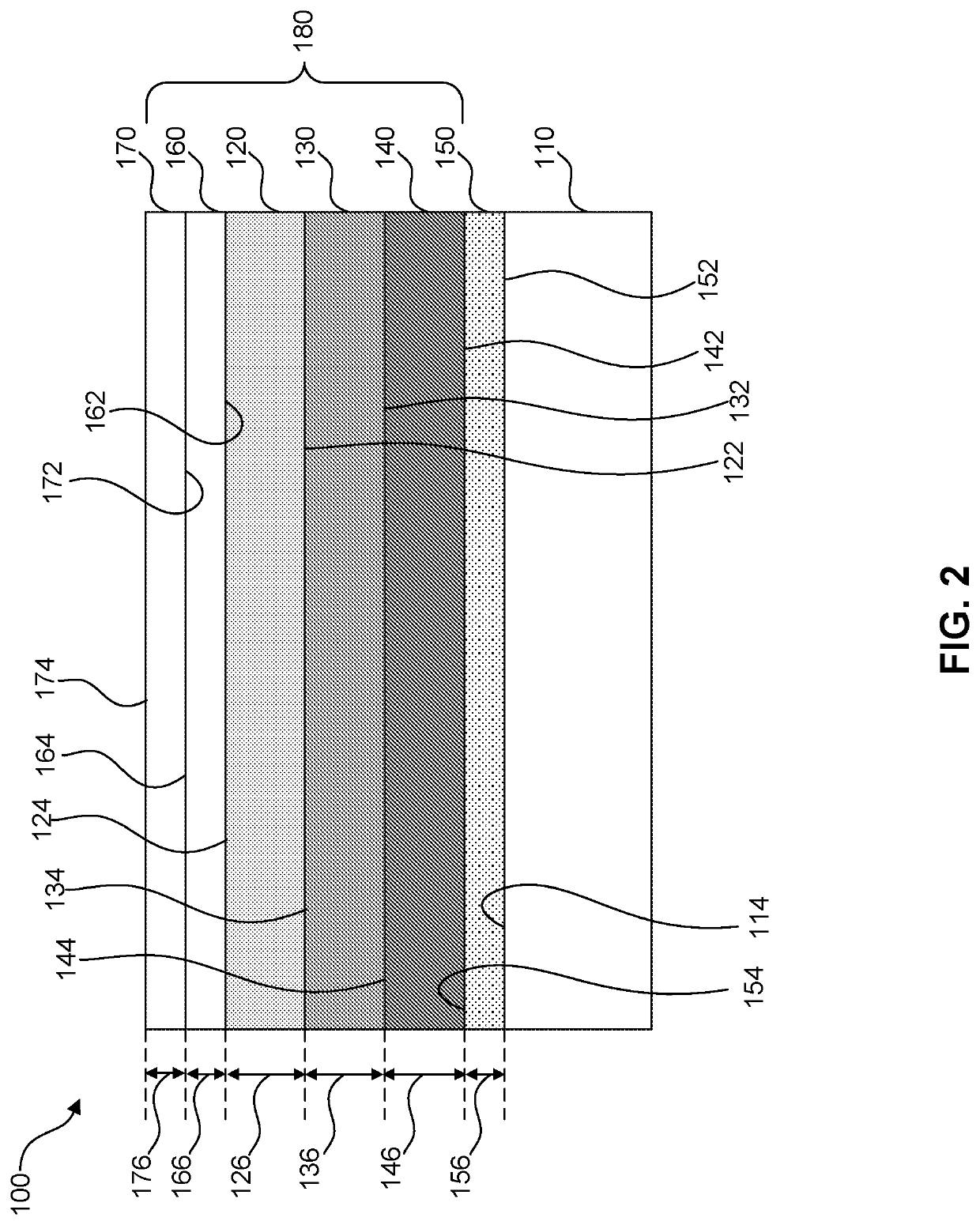Layered collagen materials and methods of making the same
a collagen and layered technology, applied in the field of layered materials, can solve the problems of large amount of feed, social concerns, and cost of natural leather production, and achieve the effects of reducing costs, and reducing the availability of traditional high-quality hides
- Summary
- Abstract
- Description
- Claims
- Application Information
AI Technical Summary
Problems solved by technology
Method used
Image
Examples
example 1
[0216]Type I bovine collagen (10 g) was dissolved in 1 L of distilled water (pH 4.5) and stirred at 50° C. for 3 hours to generate a collagen solution. The pH of the collagen solution was adjusted to 7 by adding 1 part 10× phosphate buffered saline to 19 parts collagen solution by weight and the solution was stirred for 15 minutes. The pH of the solution was confirmed using a pH meter and 1 N NaOH was used to adjust the pH to exactly 7. Colored pigments (5 parts per hundred of collagen by weight) were added to the solution and mixed for 45 minutes. The temperature of the solution was cooled down to 35° C. Stahl's F-90 Cross-linker (10 parts per hundred of collagen by weight) was added to the collagen solution and the pH was increased to 8.5 with 1 N NaOH to initiate a crosslinking reaction. The solution was stirred for an hour to extend the crosslinking reaction. As the pH of the solution turned slightly acidic during the cross-linking reaction, the solution was then brought back to...
example 2
[0217]Type I bovine collagen (5 g) was dissolved in 1 L of distilled water (pH 4.5) and stirred at 50° C. for 3 hours to generate a collagen solution. The pH of the collagen solution was adjusted to 7 using 1 N NaOH. Colored pigments (5 parts per hundred of collagen by weight) were added to the collagen solution and mixed for 45 minutes. After the pigment addition, the collagen solution was cooled down to 35° C. Stahl's F-90 Cross-linker (10 parts per hundred of collagen by weight) was added to the collagen solution and the pH was increased to 8.5 with 1 N NaOH to initiate a crosslinking reaction. The solution was stirred for an hour to extend the crosslinking reaction. As the pH of the solution turned slightly acidic during the cross-linking reaction, the solution was then brought back to neutral pH by using 1 N NaOH. A flexible polyester polyurethane polymer aqueous dispersion (140 parts per hundred of collagen by weight) was mixed with the collagen solution for 10 minutes to gene...
example 3
[0218]Type I bovine collagen (50 g) was dissolved in 1 L of distilled water (pH 4.5) and stirred at 50° C. for 3 hours to generate a collagen solution. The pH of the collagen solution was adjusted to 7 using 1 N NaOH. Colored pigments (5 parts per hundred of collagen by weight) were added to the collagen solution and mixed for 45 minutes. After the pigment addition, the collagen solution was cooled down to 35° C. Stahl's F-90 Cross-linker (10 parts per hundred of collagen by weight) was added to the collagen solution and the pH was increased to 8.5 with 1 N NaOH to initiate a crosslinking reaction. The solution was stirred for an hour to extend the crosslinking reaction. As the pH of the solution turned slightly acidic during the cross-linking reaction, the solution was then brought back to neutral pH by using 1 N NaOH. A flexible polyester polyurethane polymer aqueous dispersion (140 parts per hundred of collagen by weight) was stirred with the collagen solution to generate a blend...
PUM
| Property | Measurement | Unit |
|---|---|---|
| wt % | aaaaa | aaaaa |
| wt % | aaaaa | aaaaa |
| density | aaaaa | aaaaa |
Abstract
Description
Claims
Application Information
 Login to View More
Login to View More - R&D
- Intellectual Property
- Life Sciences
- Materials
- Tech Scout
- Unparalleled Data Quality
- Higher Quality Content
- 60% Fewer Hallucinations
Browse by: Latest US Patents, China's latest patents, Technical Efficacy Thesaurus, Application Domain, Technology Topic, Popular Technical Reports.
© 2025 PatSnap. All rights reserved.Legal|Privacy policy|Modern Slavery Act Transparency Statement|Sitemap|About US| Contact US: help@patsnap.com



